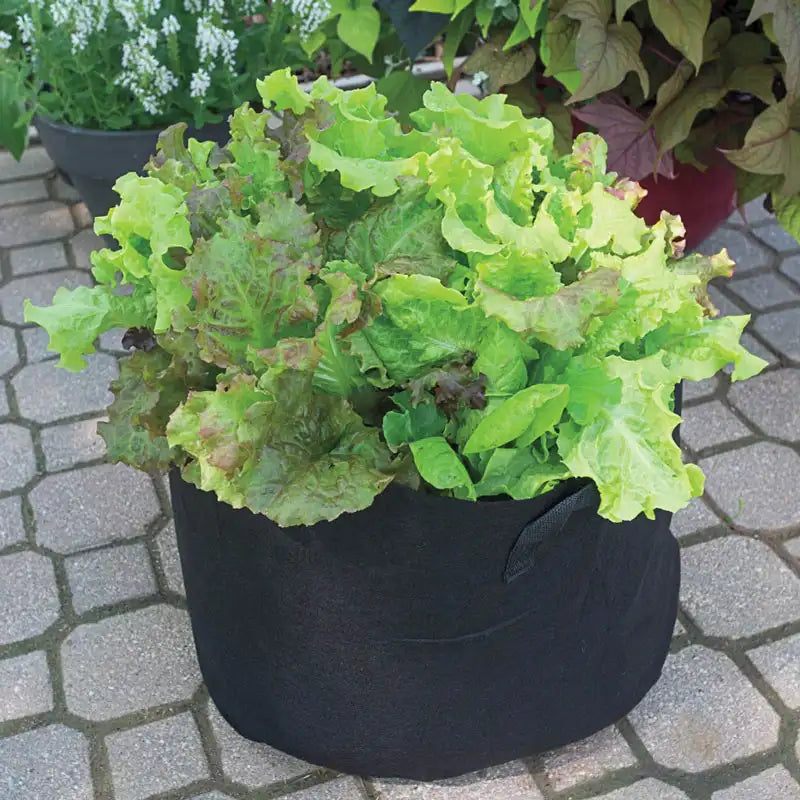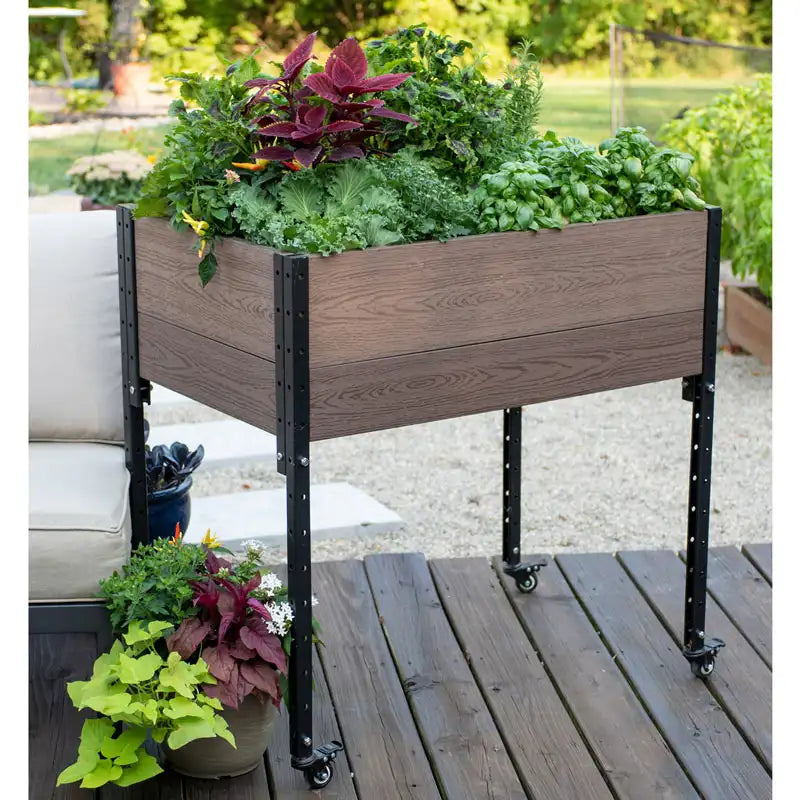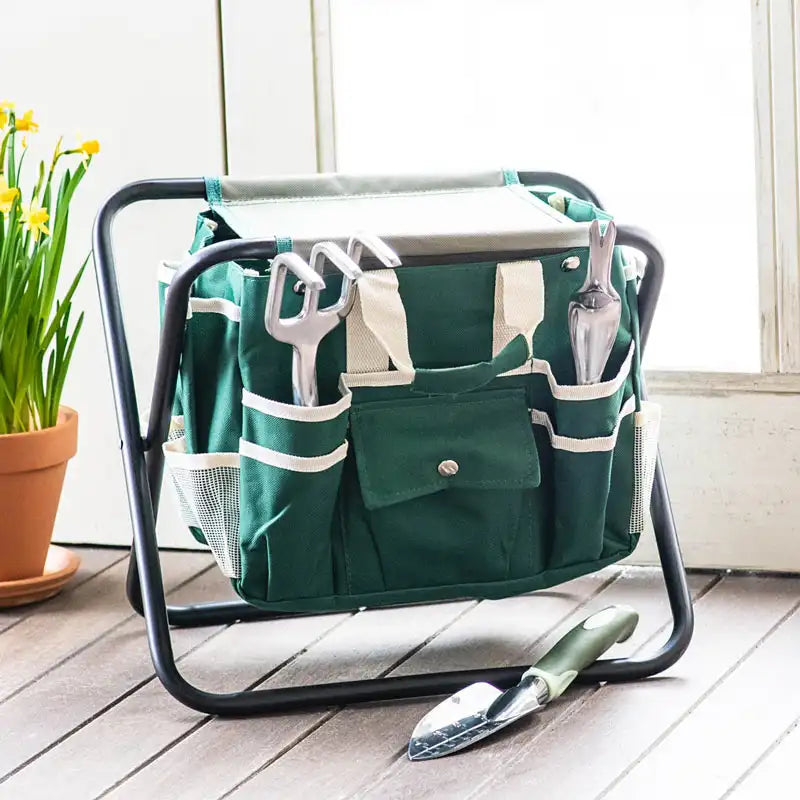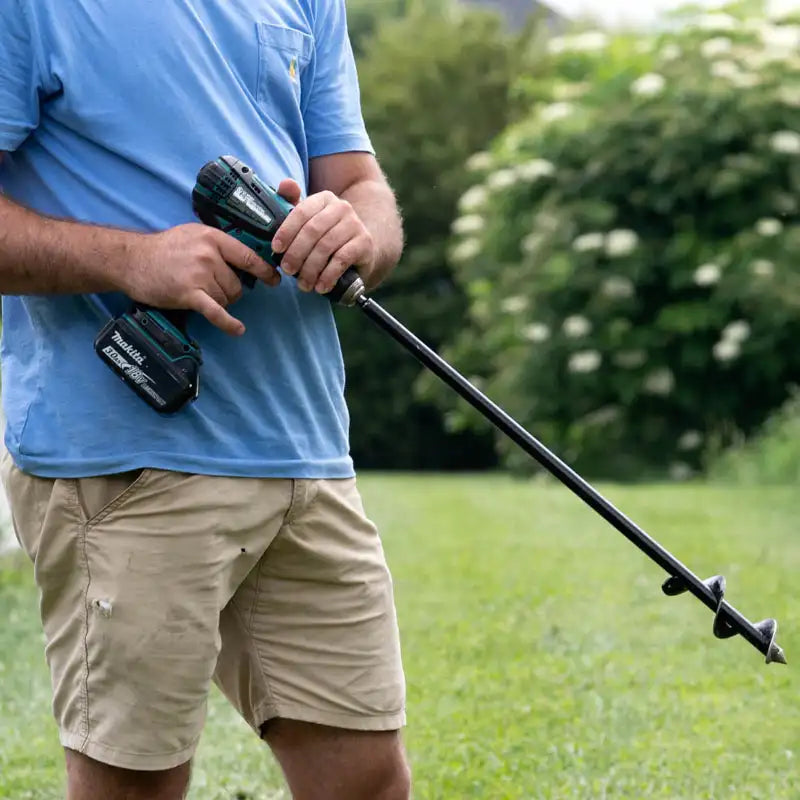Proper Postures for Personal Protection in Your Potager
As you may recall, we described several exercises in this space two weeks ago that you could (and should!) do to get your winter body ready for springtime garden chores, courtesy of my good friend Physical Therapist and Exercise Physiologist Phil Dunphy. But then, instead of an instant follow-up, we aired a repeat show last week about slugs. Was that to give you time to get in shape before we hit you with Part Two?
Nah. Our esteemed Producer Theresa Radtke took the trip of a lifetime to see the Northern Lights in Alaska. And the rest of us just wanted a week off.
But now we are back--and this time, we will more properly answer the question that sparked this anti-soreness series; to wit:
Q. Julienne in Glenside PA wrote: "I'd love to hear all your tips, tricks, and advice for people who love to garden but contend with physical disabilities or limitations. I think you have given more tips about reducing physical stress when gardening than you might think! After all, the way you gardened when you were 25 years old isn't the way you garden today."
A. First, will everybody please knock it off with the "you're not young anymore" comments? My body reminds me of that every day; OK? Not to mention the LYING mirrors in my house! (They must be haunted.) We now proceed:
Warm up first:
Just as with the exercises we showed you two weeks ago, you need to loosen up before you head out to the garden if you want to return to the house standing up straight. Phil suggests a five to 15 minute walk while holding your back nice and straight; or five minutes of gentle arm swings; or a nice warm shower. If it's OK with you and your doctor, you could also take an over-the-counter anti-inflammatory a half hour ahead of time. It is MUCH easier to prevent muscular inflammation than to cure it.
Basic Rules of Pain-Free Gardening:
Keep the work close to you. Don't reach out to do something; move closer to the work instead.
Always keep the work directly in front of you; don't twist your body to reach something. Turn and face the work directly.
Most important: NEVER reach AND twist! Even a light object can hurt your back if your arms are extended and your body is twisted. Don't BEND and twist either; it's just as bad.
Beneficial Bending:
If you need to lift something like a pot, plant or a bucket, don't bend at the waist with your legs straight. Instead, flex your knees to transfer some of the weight from your back to your thighs. Don't do a full squat or you'll lose that beneficial leverage. (And maybe fall down go boom.)
If you need to do a lot of work at ground level, get down there to do it. Use knee pads, a knee cushion, or one of them low to the ground garden kneeler type things. Don't bend over to do something at ground level if you can kneel to do it instead. And once you ARE down, try and stay down.
DON'T Do the Twist!
Don't twist to reach from bed to bed. Move to that area instead; again, always keeping the work in front of you. Phil warns: "If you twist to reach another bed you could easily be laid up for a week; and then who's gonna weed the tomatoes?"
When it's time to move to another section of the garden, try to get over to that place while you're still on the ground rather than getting up and walking over. Use one of them garden roller/kneeler type things; heck, crawl if you have to! Remember: Once you're down, try and stay down.
Two Things to do While You're Down:
Deliberately tighten your stomach muscles as often as you can while you're kneeling.
Every five minutes or so, act like a cat. Put your hands on the ground and gently roll and arch your back a few times. Just a nice smooth gentle motion. Doing this prevents you from getting into a 'locked' position.
Shovel Sense:
Don't stand straight legged with your back bent when you shovel. Keep your knees slightly bent to bring your legs into the act. Tighten your stomach muscles when you shovel.
Always pull the shovel close to your body when it's full. A shovelful of dirt held two feet away from your body exerts enormous pressure on your back, so keep that shovel close.
Disposing of Dirt:
Don't turn and throw a shovelful of dirt with your feet planted. Instead, pick up your front foot, point it in the direction you want the dirt to go, pivot on your back foot until you're facing in the right direction and then toss the dirt.
Don't dig for extended periods without stopping. Every five minutes or so, stop, put your hands on your hips and lean backwards for a few seconds. You'll last longer--and feel better when you're done.
Stretch
As we've said previously, stretch AFTER the work is done. Stretching cold muscles BEFORE exercise can be physically harmful. In a study involving hundreds of thousands of army recruits, injuries were greatly reduced by switching to after-exercise stretching. And dat's the truth!
Nah. Our esteemed Producer Theresa Radtke took the trip of a lifetime to see the Northern Lights in Alaska. And the rest of us just wanted a week off.
But now we are back--and this time, we will more properly answer the question that sparked this anti-soreness series; to wit:
Q. Julienne in Glenside PA wrote: "I'd love to hear all your tips, tricks, and advice for people who love to garden but contend with physical disabilities or limitations. I think you have given more tips about reducing physical stress when gardening than you might think! After all, the way you gardened when you were 25 years old isn't the way you garden today."
A. First, will everybody please knock it off with the "you're not young anymore" comments? My body reminds me of that every day; OK? Not to mention the LYING mirrors in my house! (They must be haunted.) We now proceed:
Warm up first:
Just as with the exercises we showed you two weeks ago, you need to loosen up before you head out to the garden if you want to return to the house standing up straight. Phil suggests a five to 15 minute walk while holding your back nice and straight; or five minutes of gentle arm swings; or a nice warm shower. If it's OK with you and your doctor, you could also take an over-the-counter anti-inflammatory a half hour ahead of time. It is MUCH easier to prevent muscular inflammation than to cure it.
Basic Rules of Pain-Free Gardening:
Keep the work close to you. Don't reach out to do something; move closer to the work instead.
Always keep the work directly in front of you; don't twist your body to reach something. Turn and face the work directly.
Most important: NEVER reach AND twist! Even a light object can hurt your back if your arms are extended and your body is twisted. Don't BEND and twist either; it's just as bad.
Beneficial Bending:
If you need to lift something like a pot, plant or a bucket, don't bend at the waist with your legs straight. Instead, flex your knees to transfer some of the weight from your back to your thighs. Don't do a full squat or you'll lose that beneficial leverage. (And maybe fall down go boom.)
If you need to do a lot of work at ground level, get down there to do it. Use knee pads, a knee cushion, or one of them low to the ground garden kneeler type things. Don't bend over to do something at ground level if you can kneel to do it instead. And once you ARE down, try and stay down.
DON'T Do the Twist!
Don't twist to reach from bed to bed. Move to that area instead; again, always keeping the work in front of you. Phil warns: "If you twist to reach another bed you could easily be laid up for a week; and then who's gonna weed the tomatoes?"
When it's time to move to another section of the garden, try to get over to that place while you're still on the ground rather than getting up and walking over. Use one of them garden roller/kneeler type things; heck, crawl if you have to! Remember: Once you're down, try and stay down.
Two Things to do While You're Down:
Deliberately tighten your stomach muscles as often as you can while you're kneeling.
Every five minutes or so, act like a cat. Put your hands on the ground and gently roll and arch your back a few times. Just a nice smooth gentle motion. Doing this prevents you from getting into a 'locked' position.
Shovel Sense:
Don't stand straight legged with your back bent when you shovel. Keep your knees slightly bent to bring your legs into the act. Tighten your stomach muscles when you shovel.
Always pull the shovel close to your body when it's full. A shovelful of dirt held two feet away from your body exerts enormous pressure on your back, so keep that shovel close.
Disposing of Dirt:
Don't turn and throw a shovelful of dirt with your feet planted. Instead, pick up your front foot, point it in the direction you want the dirt to go, pivot on your back foot until you're facing in the right direction and then toss the dirt.
Don't dig for extended periods without stopping. Every five minutes or so, stop, put your hands on your hips and lean backwards for a few seconds. You'll last longer--and feel better when you're done.
Stretch
As we've said previously, stretch AFTER the work is done. Stretching cold muscles BEFORE exercise can be physically harmful. In a study involving hundreds of thousands of army recruits, injuries were greatly reduced by switching to after-exercise stretching. And dat's the truth!





